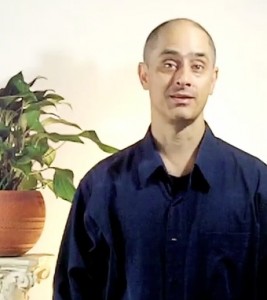ArchiCAD Training | Go With the Flow – Use ArchiCAD’s Structure – The Fifth Step to Best Practices
 Here is the fifth installment in my 7 Keys to Best Practices mini-course.
Here is the fifth installment in my 7 Keys to Best Practices mini-course.
If you missed any of the earlier lessons, you can find them here in the section on free ARCHICAD TRAINING. Sign up for my email list and you’ll get more free ArchiCAD tutorials sent to you regularly.
Please keep sending me your comments and feedback – it’s been wonderful to get emails from ArchiCAD users around the world. One person wrote to me “hay, thanks bob for this, u just cleared the mist from my face and now i can see ghosts.” I’m really happy to help clear the way for you to use ArchiCAD better!
- Please email me – I love to read your comments and respond to your questions.
The next step along our journey together is to understand ArchiCAD’s structure better, so you can take advantage of the optimal workflow.
When you use these Best Practices methods that I share with you, you won’t be fighting with ArchiCAD, you’ll find it’s becoming your trusted friend. Instead of feeling like you’re forcing it to do what you want, you’ll see how it anticipates your needs.
START AT THE ROOT, USE LEVERAGE, WORK DOWNHILL
It’s good to “work downhill,” so to speak, taking advantage of natural relationships and dependencies between different parts of ArchiCAD’s project structure.
For example, suppose that you have a detail drawing, and you decide to change the title for it on the layout sheet. The best way to do this is to go to the Project Map, and change the name of the detail there. This new name will flow into the View Map and from there into the drawing title naturally, since they are usually set to automatically use the name from the “uphill” side.
If on the other hand, you change the drawing title directly on the layout, as many users do, then the View Map and the Project Map will be out of sync. You’ll have a hard time seeing which detail in the Project Map or View Map corresponds to the one that’s on that sheet, because it has a different name. To make them consistent, you’ll have to manually rework all three of them, because they will end up set to “Custom” rather than retaining an automatic inheritance and association.
CREATE AND USE LAYER COMBINATIONS
This principle applies in many other areas. If you use ArchiCAD’s structure to apply leverage you’ll get the best results with the least effort. One can see another example of how this works with layer usage.
You can change the visibility of layers at any time to see just what you need for the task at hand. When you manually turn on and off layers, rather than using a Layer Combination, you’ll be in a “Custom” layer context. This is perfectly fine to do as you work, however it’s not best practice to have a Custom layer setting when you create views for drawings that you’ll place onto layouts.
Get in the habit of creating and using layer combinations for all Views you place as Drawings, and for any work process you do frequently. That way, if you add more layers to the project, you can simply update the layer combination and all the Drawings that refer to that layer combination will update as well.
Even if you don’t add layers, it’s often necessary to adjust and fine-tune layers for your drawings, particularly when you’re developing your office standards, or you have a more complex project. Working with layer combinations will give you more leverage as well as consistency between drawings, since updating a layer combination will affect all related Views (e.g. all Elevations, or all Reflected Ceiling Plans, etc.).
USE THE FORCE, LUKE
One of my favorite movies is Star Wars. While on the surface it is a story of war and rebellion, the hero’s journey for Luke Skywalker is an interesting one. Luke learns from his teacher Yoda to understand and feel the deeper relationships between people and things around him.
Instead of using great “effort”, Luke is encouraged to “use the Force” – the natural flow that can be directed to achieve tasks that otherwise might be extremely difficult. Likewise, when you use Best Practices in ArchiCAD, you’ll find you can almost magically get more done with less effort.
I hope you found this lesson useful. Please send me an email or post a comment on the Bobrow website telling me how you are applying these ideas.
Best regards,
Eric
P.S. The next key to Best Practices focuses on how to model in 3D better so that you won’t need to draw in 2D as much.
My Best Practices ArchiCAD training course will be reopening registration on May 24. If you like my free tutorials, you’ll love this course! I’ll be sending you a special offer for the course soon.
